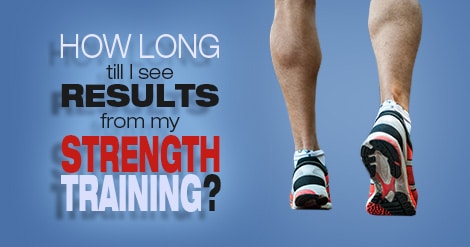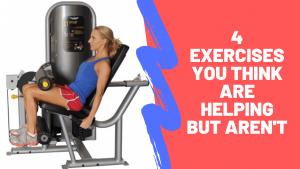Have you noticed we have focused on hip strength a lot lately?
We had a post connecting lower back and hip strength, and another on how hip mobility can determine if you have injuries in your future.
Hopefully by now you see just how important hips are within the entire chain of your body and its movements.
Good hip strength has been linked to a lower risk of IT band syndrome, patellofemoral pain syndrome (PFPS, also known as “runner’s knee”), shin splints, and low back pain (that we talked about in our post linking low back pain and hip extensor weakness), in addition to a lower risk of injury overall.1, 2
However, as runners we can sometimes be stubborn, and ignore the warning signs telling us that this is a pain we should not be running through.
Before you know it, you are struggling with one of the above-mentioned injuries.
Hopefully, your next step is you start going to a good physical therapist who keeps up to date on the latest research on running injuries, and you are prescribed a hip strengthening program for rehab.
Then the question remains, how long until I see results from all that strength work?

How long will it take to build hip strength?
Obviously, every injury is different, but when we look at research that uses hip strengthening programs, like our 5 Exercises to Prevent Injury to rehab an injury associated with hip muscle weakness can give us some idea of the timeframe to total recovery.
We will focus on studies that successfully treat running injuries with hip strength rehab programs.
The first study we will look at was published in 2006 by researchers at the University of Kentucky. In this study, a quadriceps and hip abductor strength routine was used to treat PFPS in fourteen subjects.
Over the six-week duration of the study, knee pain gradually diminished, with the decrease becoming statistically significant after four weeks of strength training.
In 2006, a study of PFPS successfully treated thirty-five patients using a six-week hip flexion strength program,4.
Another study in 2000, looked at runners with IT band syndrome following a six-week strength program with success5. However, neither of these studies took week-by-week measurements of knee pain. Did you read our post on the 2 Exercises to Test Your Hip Strength and Stability to Determine Your Risk of Knee Injuries?
A 2011 study matched the four-week marker by demonstrating that a hip strength program resulted in superior results compared to a quadriceps-strengthening program for treating PFPS in runners after four weeks of rehab work.6
A 2011 study by researchers at the University of Calgary showed that a simple hip strength program, completed daily, produced very good results in a small group of runners with PFPS.7
Other than this small study, I have not seen any research using a shorter time period.
Individual differences with rehab
These studies varied in the details of their design, but one element they all shared is that the rehab exercises were done quite frequently—at least three days a week, and in some cases, every day!
Even with regular rehab work, it is likely to take three to four weeks for to see some real results.
Remember, these are studies of many individual runners who may have the same injury, but may have varying levels of the injury.
For example, someone with only minor hip weakness contributing to IT band syndrome might see results more quickly than a more painful case of IT band syndrome with more significant hip muscle weakness, who may take longer to recover from, even with the right rehab program.
Conclusion
Even the perfect rehab exercise routine will take a while before is has a significant effect, so if you are injured, be patient! You will not return to full strength overnight.
Research indicates that successful programs, on average, take three to six weeks to have a significant impact. Give your rehab program at least this long to kick into effect before you ditch it for something else.
During this time, if you cannot run without pain, you can try to maintain your fitness through cross training, assuming it does not irritate your injury.
Unfortunately, there is no quick solution to running injuries.
RunnersConnect Bonus
Download your FREE Hip Strengthening Exercises Guide.
Download a video version of the 5 most effective hip exercises for runners. You’ll get full descriptions on how to perform and a video to help guide you.



 <
<





2 Responses
Did they still run while doing the strength program?
Hi Alex, the studies do not actually specify this in their papers, it is likely that the ones who could still run would be running, but the ones whose pain was more severe, were probably only focusing on these exercises. Sorry we could not answer your question precisely!